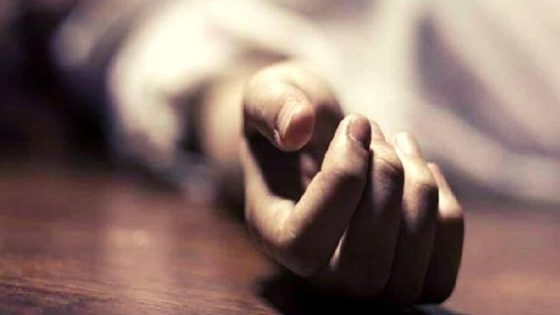Lionsgate has been anxious for the latest incarnation of “The Crow” not to be branded as a remake or reboot, though in returning a dormant screen franchise to life, it does qualify as the second. It is indeed no remake, even if the script this time around takes even more liberties with the source material of J. O’Barr’s original comics than its 1994 big-screen adaptation did. That film is burned into the collective consciousness largely because Brandon Lee died in an on-set accident while making it. His career breakthrough became a memorial that would’ve been poetically morbid even without the stamp of real-life tragedy.
Comparisons driven by sentimental favoritism seldom flatter, so it’s understandable the studio hoped to banish them as far as possible. It was already going to be an uphill struggle for a long-aborning project that cycled through numerous directors, writers and stars over the last decade-plus before arriving at this finished product, with some fan loyalists and early reviewers sharpening their knives for the kill. But if you’re able to put prior “Crows” out of your head, “Snow White and the Huntsman” director Rupert Sanders’ film does work to a considerable extent on its own terms — as a dreamy fantasy thriller that’s bloody yet oddly inviting.
More slowly paced than most popcorn entertainments these days, it has a tenor less superheroic, pop-Gothic or martial-artsy than viewers may expect from previous entries. This reinvention’s contrastingly elegant yet dislocated revenge-slash-love story is no slam dunk. But neither is it an unwatchable dud.
O’Barr conceived the comic book series (which began publishing in 1989) to express grief and rage after his fiancée’s death in a collision with a drunk driver. In both graphic novel and Alex Proyas’ hit movie, the bad guys are urban criminal lowlifes, caricatured louts poised between “Dick Tracy” and a “Death Wish” sequel. Here, however, Zach Baylin and William Schneider’s script makes the villains kinky rich evildoers too well-connected to face consequences for their crimes, not unlike concurrently opening “Blink Twice.”
In an unnamed city, Shelly (Brit pop star FKA Twigs) is a singer on the rise unwisely drawn to the hedonistic scene bankrolled by shadowy tycoon Vincent Roeg (Danny Huston), who’s always on the lookout for fresh talent. At his shindigs, good people seem compelled to do bad things. When her friends Zadie (Isabella Wei) and Dom (Sebastian Orozsco) record evidence of such deeds, they are quickly found out, placing all in danger. Roeg is not to be messed with — he’s literally sold his soul to the devil, winning longevity and a luxe lifestyle in exchange for sending the souls of corrupted “innocents” you-know-where. “You go to Hell so I don’t have to,” he tells the unfortunate Zadie.
Fleeing his goons (chiefly figures played by Laura Birn, David Bowles and Karel Dobry), Shelly manages to get herself arrested, and ensures the cops send her to a fanciful state rehab facility. There, she meets Eric (Bill Skarsgard), a lanky, angsty loner she decides she likes — and why not? With his mullet, myriad tattoos and sweetly sardonic air, frequently shirtless Eric is like Pete Davidson with a world-class personal trainer. Both these supposed misfits seem like nice, attractive party people, the sorts whose surplus of cool threads and available crash pads go unexplained by any evident income or backstory. Their breezy connection accelerates once it turns out rehab lockup isn’t safe from Roeg & co., either.
The two escape, their chemistry accumulating during what’s pretty much a long falling-in-love montage — this “Crow” takes its time getting to the revenge part, unlike earlier franchise installments that relegated happy moments to flashbacks. But villainy finally catches up with the couple, who are killed. Eric then wakes up in an industrial-landscape Limbo where an entity called Kronos (Sami Bouajila) informs him he’s dead … with a caveat.
Some souls, he’s told, are guided by a crow to an afterlife. Others, too burdened by unfinished business, find their bird winging them back to the mortal plane. So long as he’s protected by the purity of his grieving love, Eric can bounce back (albeit painfully) from whatever punishment Rogue’s enforcers dish out. He spends the film’s second half lethally working his way up that chain of command, culminating in an elaborate, splattery one-man-versus-private-army confrontation intercut with an operatic performance. (That opera house must have incredible soundproofing, since patrons are oblivious to incessant gunfire just outside the auditorium.) This sequence recalls the climactic bullet ballets in Coppola’s “Cotton Club” and “The Godfather Part III,” achieving some of their self-conscious bravado.
It’s a good setpiece, and there’s a decent sendoff a bit later for Roeg, whose monicker is surely a cinephile in-joke. Elsewhere, Sanders’ “Crow” can lack urgency, but it doesn’t seem to be aiming for it. Nor does it have any real depth of emotion, despite the new conceit of Eric thinking he can somehow retrieve Shelly from the underworld, like Orpheus and Eurydice. Instead, the movie has a sort of bemused, floating quality that only occasionally feels slack.
The comics’ macabre starkness, and the first film’s ornate claustrophobia, give way to a sleek, airier look conjured up by DP Steve Annis’ widescreen compositions, well-chosen locations in Prague and Germany, the production design by Robin Brown (who’s cited Tarkovsky’s “Stalker” as one inspiration), and Kurt and Bart’s playful costumes. Special visual effects are restrained, apart from that omnipresent crow.
While Proyas’ grunge-era vision wanted its MTV bad, style and mood here have a very different, somewhat elevated flavor. Even when the violence is very “hard R,” there’s little sense of lurid pulp jollies being had. It’s satisfying enough, but has a semi-detached effect — not unlike the soundtrack choices, which lean toward slightly incongruous ’80s cuts by Joy Division, Gary Numan and the like, rather than the full-tilt, headbanging rawk Brandon Lee did his acrobatics to. The performances are effective in ways that are fairly understated given the thin character writing, avoiding overly broad strokes.
Probably there will be little call for more where this came from, or even for Skarsgard to repeat the role. Still, his and Sanders’ spin in the guyliner — a signature hero’s look that in fact doesn’t surface until late — is at the very least the best “Crow” movie released since that other one. Of course the sequels in-between were awful. But 2024’s “re-imagining” has personality and panache enough to satisfy … at least if you’re not glued to the rear-view mirror.
Source Agencies




